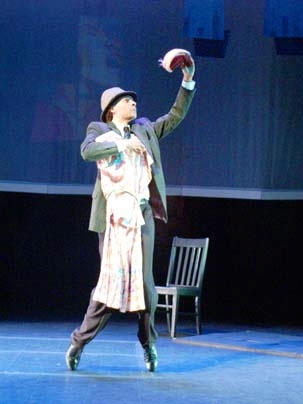Associate Professor Thomas DeFrantz uses tap shoes and technology to tell the story of the life and music of jazz pianist and composer Thelonious Monk (1917-1982). DeFrantz will reprise his solo tap dance "Monk's Mood: A Performance Meditation on the Life and Music of Thelonious Monk," March 11-13 and 17-19 in Kresge Little Theater.
Conceived and performed by DeFrantz, "Monk's Mood" explores tap dance as a narrative form augmented by digital technologies. "One of my concerns is how to use technology to enhance theatrical storytelling and not simply as a sort of gimmick," said DeFrantz.
"Monk's Mood" explores Monk's personal relationships with his wife, Nellie, and the Baroness Pannonica de Koenigswarter, who befriended Monk and other jazz musicians of the bebop era. DeFrantz' choreography portrays Monk's isolation, melancholy, creative genius and ultimately his madness.
"This piece also illustrates the potential of tap dance as a lyrical form of storytelling," DeFrantz said. "I intend to explore narrative possibilities within tap, a dance form typically noted for its flashy tricks and rhythmic aspects."
The 50-minute work employs high-tech set pieces designed by MIT and Stanford graduate students to trigger sound and video images during the performance. Foot buttons originally designed for the video game "Dance Dance Revolution" are built into wooden platforms on the stage. Throughout the piece, DeFrantz controls sound and imagery through his dancing.
"Monk's Mood" arose from DeFrantz's fascination with Monk's unique way of hearing and playing. "Monk took a basic tonality, such as a chord progression, and made it strange," he said. "When I dance the way that he played, even simple tap steps become very, very strange. In a way, my steps are analogous to his piano keys; I'm trying to find his rhythms with my feet."
The work is presented by Slippage, an interdisciplinary performance collective. Founded by DeFrantz in 2003, Slippage: Interventions in Performance, Culture and Technology explores connections between performance and emergent technology in the service of theatrical storytelling.
Performances are at 8 p.m. except for a 2 p.m. show on Sunday, March 13. Admission is free; donations are accepted.
A version of this article appeared in MIT Tech Talk on March 9, 2005 (download PDF).






